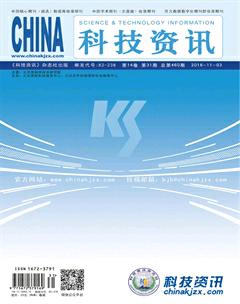食品加工过程晚期糖基化末端产物生成机理的研究
李琳++韩立鹏++梁志理++陈洁++石先哲
摘要:近年来在食品中发现有较多的晚期糖基化末端产物(AGEs),尤其是脂类加工的食品中AGEs的含量较高。食源性AGEs对人体健康具有潜在危害性。为了研究脂类食品中AGEs的生成机理,选取羧甲基赖氨酸(CML)作为AGEs的代表,将CML的产生和食品加工过程相关联。按照从微观机理到宏观表象的整体研究思路,以模拟体系作为出发点,逐步将研究体系扩展到真实食品体系。从反应历程、中间产物、自由基和碳源四个角度深入探讨了脂类食品体系中CML的生成机理,为有效控制食品加工过程中潜在化学危害物的产生提供理论依据。 主要研究内容及成果如下。 (一)非脂类模拟体系中CML的化学反应动力学 CML在100℃条件下具有热稳定性,能够在食品中积累。果糖基赖氨酸(FL)和乙二醛(GO)作为生成食源性CML的重要中间产物,在食品加工过程都存在一个极大值点。100℃条件下FL路径生成CML占主导地位,贡献率为84.7%,而GO路径生成CML占次要地位,贡献率为15.3%。分别建立了100℃条件下FL路径和GO路径生成CML的表观动力学方程。因此,有望通过在食品加工过程中调控加工参数和添加抑制剂等方式来控制食源性CML的产生。 (二)脂类模拟体系中CML的生成机理 羟基自由基(OH*)对美拉德反应体系中生成CML的三条路径都具有促进作用。亚油酸(Lin)、油酸(Ole)和三油酸甘油酯(Tri)能够促使美拉德反应体系产生更多的OH*;,这些OH?促进了模拟体系中的FL和GO向CML的转化。甘油(Gly)对OH*具有清除作用,从而降低了模拟体系中的CML含量。就引发自由基而言,对CML的促进作用按照从大到小排列为:Ole﹥Lin﹥Tri﹥Glu﹥Gly。 就中间产物而言,对CML的贡献按照从大到小排列为:FL路径(针对Glu)﹥Gly氧化产生GO路径﹥GO路径(针对葡萄糖(Glu))﹥Lin氧化产生GO路径﹥Ole氧化产生GO路径﹥Tri氧化产生GO路径。因此,脂类对CML生成的促进作用来源于两个方面:(1)促使美拉德反应模拟体系产生更多OH?,促进CML的产生;(2)不饱和脂肪酸和Gly氧化产生GO,成为生成CML的碳源。 (三)植物油模拟体系中CML的生成规律 油脂对模拟体系中CML的促进作用和油脂中不饱和脂肪酸含量存在正相关性,即含有较多不饱和脂肪酸的油脂能够在美拉德反应模拟体系中引发较多的OH*从而促进GO和FL向CML转化。因此,在食品加工过程中,含有较多不饱和脂肪酸的油脂更容易促进CML的产生。 (四)真实食品体系中CML的生成规律 食品储藏过程中,食源性CML会随着储藏时间的延长而逐渐积累。在食品加工过程中,脂类食品体系中CML的含量随着油脂含量的增加而逐渐增加。
关键词:晚期糖基化末端产物;羧甲基赖氨酸;食品;油脂;自由基;
Mechanism of carboxymethyllysine formation in lipids food system
Abstract:Food-derived glycation end products (AGEs) were potentially hazardous to human health, Nε-carboxymethyllysine (CML) was chose as a representative of AGEs. CML formation mechanism was investigated as follow to offer theory for controlling potential hazardous materials in food production process. (1) Chemical reaction kinetics of CML in non-lipid model system. CML content could accumulate in food for its thermal stability. There were both fructoselysine (FL) and glyoxal (GO) contents maximum points in their formation process. CML derived from FL played a major role with contribution rate of 84.7% for CML formation, while CML derived from GO played a minor role with contribution rate of 15.3% for CML formation. CML apparent kinetics equations through FL pathway and GO pathway were obtained respectively. Therefore, it is possible to control food-derived CML through adjusting processing variables and adding inhibitors. (2) Formation mechanism of CML in lipid model system. Hydroxyl radical (OH*) induced by Fenton reagent could promote three pathways for CML formation in Maillard reaction. linoleic acid (Lin), oleic acid (Ole) and triglyceride (Tri) could induce more OH; in Maillard reaction model system which promoted FL and GO conversion to CML. However, glycerol (Gly) could reduce CML content in model system for its scavenging OH*; ability. The promoting CML formation abilities of lipids on modeling system were in the order of Ole﹥Lin﹥Tri﹥Glu﹥Gly. The contribution rate of Gly to CML increased with time. The promoting effect of Lin, Ole, Tri and Gly on CML formation through oxidation to GO were in the order of FL pathway﹥Gly﹥GO pathway﹥Lin﹥Ole﹥Tri. Therefore, the promoting effect of lipid on CML formation derived from two aspects: Inducing more OH* to promote CML formation; Offering carbon source for CML formation through oxidation to GO. (3) CML formation in vegetable oils model system. The promotion effect of five oils on CML formation was in the order of Soybean﹥Corn﹥Olive﹥Palm﹥Rape. Fatty acid analysis for five oils showed that the more unsaturated fatty acid the oils had, the more OH* they induced in model system. Therefore, oils with more unsaturated fatty acid in food production process were easier to increase CML formation. (4) CML formation in real food system. CML could accumulate in food storage process and CML content in lipid system increased with oil content increasing in food production process.
Keywords:advanced glycation end products; carboxymethyllysine; food; oil; free radical
閱读全文链接(需实名注册):http://www.nstrs.cn/xiangxiBG.aspx?id=49014&flag=1

